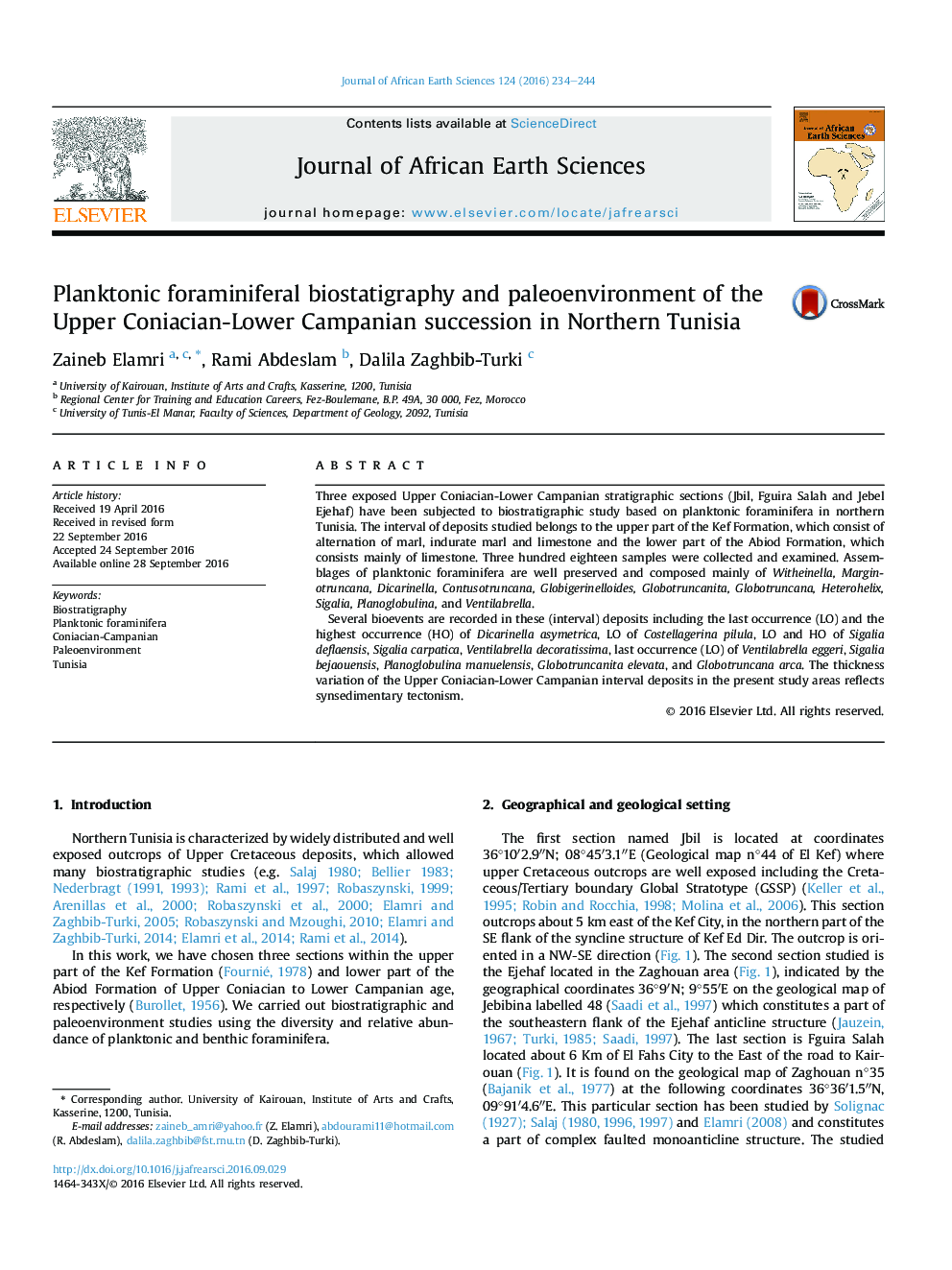| Article ID | Journal | Published Year | Pages | File Type |
|---|---|---|---|---|
| 4728145 | Journal of African Earth Sciences | 2016 | 11 Pages |
•Coniacian – Campanian planktonic foraminiferal biostatigraphy in northern Tunisia.•57 species and 18 genera were identified.•Discuses different planktonic foraminiferal bioevents and stage boundaries.•Reconstitute the paleoenvironments in different paleo-lows and paleo-highs.
Three exposed Upper Coniacian-Lower Campanian stratigraphic sections (Jbil, Fguira Salah and Jebel Ejehaf) have been subjected to biostratigraphic study based on planktonic foraminifera in northern Tunisia. The interval of deposits studied belongs to the upper part of the Kef Formation, which consist of alternation of marl, indurate marl and limestone and the lower part of the Abiod Formation, which consists mainly of limestone. Three hundred eighteen samples were collected and examined. Assemblages of planktonic foraminifera are well preserved and composed mainly of Witheinella, Marginotruncana, Dicarinella, Contusotruncana, Globigerinelloides, Globotruncanita, Globotruncana, Heterohelix, Sigalia, Planoglobulina, and Ventilabrella.Several bioevents are recorded in these (interval) deposits including the last occurrence (LO) and the highest occurrence (HO) of Dicarinella asymetrica, LO of Costellagerina pilula, LO and HO of Sigalia deflaensis, Sigalia carpatica, Ventilabrella decoratissima, last occurrence (LO) of Ventilabrella eggeri, Sigalia bejaouensis, Planoglobulina manuelensis, Globotruncanita elevata, and Globotruncana arca. The thickness variation of the Upper Coniacian-Lower Campanian interval deposits in the present study areas reflects synsedimentary tectonism.
